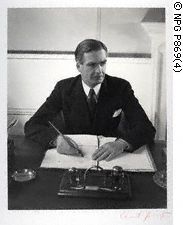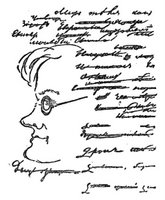THE CRISIS IN PAKISTAN PART TWO: A VIEW FROM STRATFOR.COM
"Diplomats say there is no reason to think that Gen Kiyani or other powerful figures in the military establishment - including the chairman of the joint chiefs of staff committee, the chiefs of the armed forces and the corps commanders of the Pakistan army - will rise against Mr Musharraf.
"He took care to ensure that the military hierarchy was consulted individually and collectively," says one close observer of events. "The military hierarchy seems to be loyal....
A more pressing concern for Mr Musharraf is that the crisis of morale in the lower ranks of the army infects the whole organisation. There is a sense in the army that it is losing a battle, against pro-Taliban militants in the tribal areas, that soldiers are not even sure they want to be fighting. Last week violence reached northern Pakistan, when an Islamist militia led by Maulana Fazlullah, a radical cleric, tried to take over the Swat valley....
On Saturday, as Mr Musharraf was preparing to issue the emergency order, Mr Fazlullah's militants hoisted their flag over a captured police station and released 48 government soldiers who had surrendered without firing a shot in the army's first set-piece conflict with Islamists outside the tribal belt....
The following day, in another damaging blow to the military's prestige, the government released 25 militants in exchange for the release of 213 army personnel who have been held hostage in Waziristan for more than two months.
Some of the freed militants had been convicted by an anti-terrorism court. The exchange ended one of the most embarrassing episodes in the Pakistani army's history, but at an exceptionally high cost to its self-image.
"My gut feeling is that the army is pretty fed up, which you can see from the number of soldiers surrendering to insurgents in the tribal areas and saying they don't want to fight their brethren," says retired brigadier Shaukat Qadir.
"Lower-ranking officers have had more than enough and some senior officers will also be apprehensive as to how far they have to go in support of President Musharraf's interests and in support of the US war on terror. Some day somebody will stand up and say 'no'...."
The biggest test of the army's loyalty to Mr Musharraf, however, could come soon, if it is forced to restrain demonstrators in the streets of Lahore.
While the Punjabi-dominated officer class has no compunction about ordering a crackdown in the tribal areas or in the Pashtun north-west frontier province, it will be a different story if popular opposition to emergency rule forces the army to fire on its own flesh and blood in the Punjab". www.ft.com
As per the Financial Times report of yesterday, there is a question of whether or not, the Army, perhaps Pakistan's only national-wide institution, is perhaps beginning to fracture, due to the creeping Islamization, which has been a hallmark of Pakistani politics for the past ten to fifteen years. Certainly, notwithstanding Musharraf's repeated promises to halt or even reverse that trend, his military rule has seen nothing of the kind. Tactically, he has proved to be unable or unwilling to make the leap as a champion of secular politics and some type of Democratization. Instead what has occurred is that he has craftily used Washington's need for a seemingly pliant partner on the border of Afghanistan, to paint a picture of his regime which bears no resemblance to reality. The consequent is that notwithstanding some limited co-operation on terrorism and terrorists, both in Pakistan itself and in Afghanistan, Musharraf has allowed a situation to worsen in his country rather than to improve. Make no mistake: there are no, repeat no, easy or quick answers in Pakistan. And, it could very well be that once Musharraf is removed, the floodgates will open to an all out anarchy and chaos. Or alternatively, there is the possibility that with the downfall of Musharraf and the military regime, that a form of partial democratization (more likely political pluralism), with free and fair elections to a representative or semi-representative parliament could be on the cards. Of course, the real question is: will any change provide for more or less stability? That is the real question at hand, and so far no one has a true answer. However for some pointers in the right direction, please find attached, an analysis by the American online journal, www.stratfor.com. We present it for your edification.
GEOPOLITICAL INTELLIGENCE REPORT: Pakistan and its Army
By George Friedman
"Pakistani President Gen. Pervez Musharraf declared a state of emergency over the weekend, precipitating a wave of arrests, the suspension of certain media operations and the intermittent disruption of communications in and out of Pakistan. As expected, protests erupted throughout Pakistan by Nov. 5, with clashes between protesting lawyers and police reported in Lahore, Karachi, Islamabad and several other cities. Thus far, however, the army appears to be responding to Musharraf's commands.
The primary issue, as Musharraf framed it, was the Pakistani Supreme Court's decision to release about 60 people the state had charged with terrorism. Musharraf's argument was that the court's action makes the fight against Islamist extremism impossible and that the judiciary overstepped its bounds by urging that the civil rights of the accused be protected.
Musharraf's critics, including the opposition's top leader, former Pakistani Prime Minister Benazir Bhutto, argued that Musharraf was using the Supreme Court issue to protect his own position in the government, avoid leaving the army as promised and put off elections. In short, he is being accused of staging a personal coup under the guise of a state of emergency.
Whether Musharraf himself survives is not a historically significant issue. What is significant is whether Pakistan will fall into internal chaos or civil war, or fragment into smaller states. We must consider what that would mean, but first we must examine Pakistan's underlying dilemma -- a set of contradictions rooted in Pakistani history.
When the British conquered the Indian subcontinent, they essentially occupied the lowlands and pushed their frontier into the mountains surrounding the subcontinent -- the point from which a relatively small British force, augmented by local recruits, could hold against any external threat. The eastern line ran through the hills that separated Bengal from Burma. The northern line ran through the Himalayas that separate China from the subcontinent. The western line ran along the mountains that separated British India from Afghanistan and Iran.
This lineation -- which represented not a political settlement but rather a defensive position selected for military reasons -- remained vague, driven by shifting tactical decisions designed to secure a physical entity, the subcontinent. The Britons were fairly indifferent to the political realities inside the line. The British Raj, then, was a wild jumble of states, languages, religions and ethnic groups, which the Britons were quite content to play against one another as part of their grand strategy in India. As long as the British could impose an artificial, internal order, the general concept of India worked. But as the British Empire collapsed after World War II, the region had to find its own balance.
Mahatma Gandhi envisioned post-British India as being a multinational, multireligious country within the borders that then existed -- meaning that India's Muslims would live inside a predominantly Hindu country. When they objected, the result was both a partition of the country and a transfer of populations. The Muslim part of India, including the eastern Muslim region, became modern Pakistan. The eastern region gained independence as Bangladesh following a 1971 war between India and Pakistan.
Pakistan, however, was not a historic name for the region. Rather, reflective of the deeply divided Muslims themselves, the name is an acronym that derives, in part, from the five ethnic groups that made up western, Muslim India: Punjabis, Afghans, Kashmiris, Sindhis and Balochis.
The Punjabis are the major ethnic group, making up just under half of the population, though none of these groups is entirely in Pakistan. Balochis also are in Iran, Pashtuns also in Afghanistan and Punjabis also in India. In fact, as a result of the war in Afghanistan more than a quarter century ago, massive numbers of Pashtuns have crossed into Pakistan from Afghanistan -- though many consider themselves to be moving within Pashtun territory rather than crossing a foreign border.
Geographically, it is important to think of Pakistan in two parts. There is the Indus River Valley, where the bulk of the population lives, and then there are the mountainous regions, whose ethnic groups are deeply divided, difficult for the central government to control and generally conservative, preferring tradition to modernization. The relative isolation and the difficult existence in mountainous regions seem to create this kind of culture around the world.
Pakistan, therefore, is a compendium of divisions. The British withdrawal created a state called Pakistan, but no nation by that name. What bound its residents together was the Muslim faith -- albeit one that had many forms. As in India -- indeed, as in the Muslim world at the time of Pakistan's founding -- there existed a strong secularist movement that focused on economic development and cultural modernization more than on traditional Islamic values. This secularist tendency had two roots: one in the British education of many of the Pakistani elite and the second in Turkish founder Mustafa Kemal Ataturk, who pioneered secularism in the Islamic world.
Pakistan, therefore, began as a state in crisis. What remained of British rule was a parliamentary democracy that might have worked in a relatively unified nation -- not one that was split along ethnic lines and also along the great divide of the 20th century: secular versus religious. Hence, the parliamentary system broke down early on -- about four years after Pakistan's creation in 1947. British-trained civilian bureaucrats ran the country with the help of the army until 1958, when the army booted out the bureaucrats and took over.
Therefore, if Pakistan was a state trying to create a nation, then the primary instrument of the state was the army. This is not uniquely Pakistani by any means, nor is it unprincipled. The point that Ataturk made -- one that was championed in the Arab world by Egypt's Gamal Abdul Nasser and in Iran by Reza Pahlavi -- was that the creation of a modern state in a traditional and divided nation required a modern army as the facilitator. An army, in the modern sense, is by definition technocratic and disciplined. The army, rather than simply an instrument of the state, therefore, becomes the guarantor of the state. In this line of thinking, a military coup can preserve a constitution against anti-constitutional traditionalists. If the idea of a military coup as a guarantor of constitutional integrity seems difficult to fathom, then consider the complexities involved in creating a modern constitutional regime in a traditional society.
Although the British tradition of parliamentary government fell apart in Pakistan, one institution the Britons left behind grew stronger: the Pakistani army. The army -- along with India's army -- was forged by the British and modeled on their army. It was perhaps the most modern institution in both countries, and the best organized and effective instrument of the state. As long as the army remained united and loyal to the concept of Pakistan, the centrifugal forces could not tear the country apart.
Musharraf's behavior must be viewed in this context. Pakistan is a country that not only is deeply divided, but also has the real capacity to tear itself apart. It is losing control of the mountainous regions to the indigenous tribes. The army is the only institution that transcends all of these ethnic differences and has the potential to restore order in the mountain regions and maintain state control elsewhere.
Musharraf's coup in 1999, which followed a series of military intrusions, as well as attempts at secular democratic rule, was designed to preserve Pakistan as a united country. That is why Musharraf insisted on continuing to wear the uniform of an army general. To remove the uniform and rule simply as a civilian might make sense to an outsider, but inside of Pakistan that uniform represents the unity of the state and the army -- and in Musharraf's view, that unity is what holds the country together.
Of course the problem is that the army, in the long run, reflects the country. The army has significant pockets of radical Islamist beliefs, while Inter-Services Intelligence (ISI), the military's intelligence branch, in particular is filled with Taliban sympathizers. (After all, the ISI was assigned to support the mujahideen fighting the Soviets in the 1980s, and the ISI and other parts of the army absorbed the ideology). Musharraf has had to walk a tightrope between U.S. demands that he crack down on his own army and his desire to preserve his regime -- and has never been able to satisfy either side fully.
It is not clear whether he has fallen off the tightrope. Whatever he does, as long as the army remains united and he controls the corps commanders, he will remain in power. Even if the corps commanders -- the real electors of Pakistan -- get tired of him and replace him with another military leader, Pakistan would remain in pretty much the same position it is in now.
In simple terms, the real question is this: Will the army split? Put more broadly, will some generals simply stop taking orders from Pakistan's General Headquarters and side with the Islamists? Will others side with Bhutto? Will ethnic disagreements run so deep that the Indus River Valley becomes the arena for a civil war? That is what instability in Pakistan would look like. It is not a question of civilian institutions, elections or any of the things we associate with civil society. The key question on Pakistan is whether the army stays united.
In our view, the senior commanders will remain united because they have far more to lose if they fracture. Their positions depend on a united army and a unified chain of command -- the one British legacy that continues to function in Pakistan.
There are two signs to look for: severe internal dissent among the senior generals or a series of mutinies by subordinate units. Either of these would raise serious questions as to the future of Pakistan. Whether Musharraf survives or falls and whether he is replaced by a civilian leader are actually secondary questions. In Pakistan, the fundamental issue is the unity of the army.
At some point, there will be a showdown among the various groups. That moment might be now, though we doubt it. As long as the generals are united and the troops remain under control, the existence of the regime is guaranteed -- and in some sense the army will remain the regime. Under these conditions, with or without Musharraf, with or without democracy, Pakistan will survive"
www.stratfor.com











0 Comments:
Post a Comment
<< Home